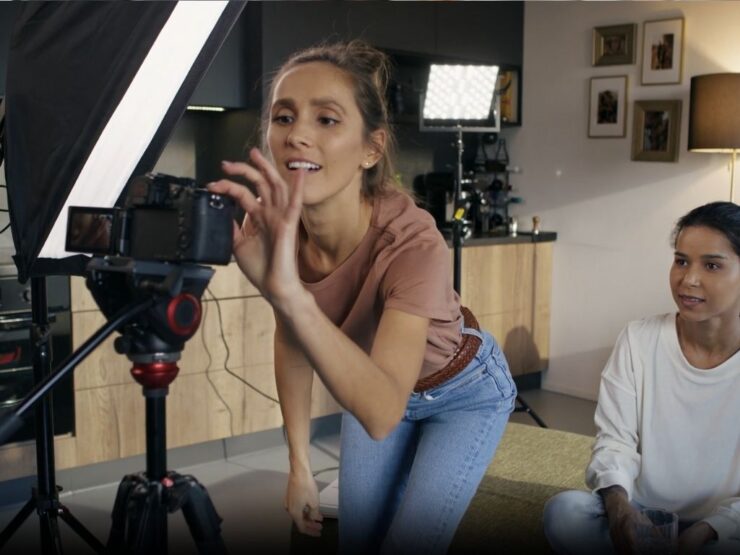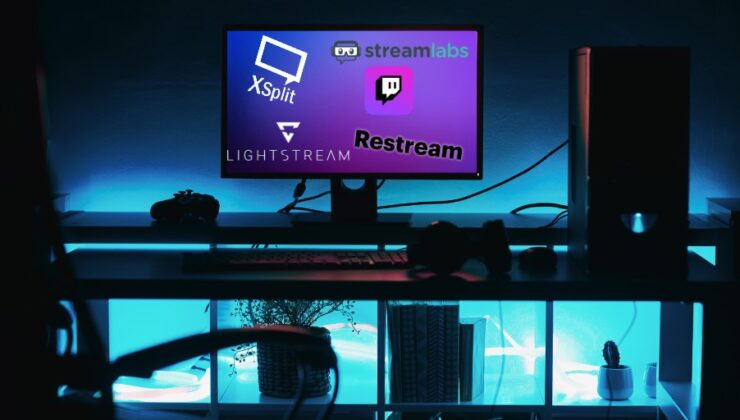High-quality audio is crucial for streamers looking to engage and retain an audience.
Clear and crisp audio allows for effective communication and enhances the overall viewing experience, making it essential for both professional and amateur streamers.
Many would advocate that clear sound is even more important than video quality, depending on the type of content.
Let me share with you how is it possible to achieve the highest possible sound quality.
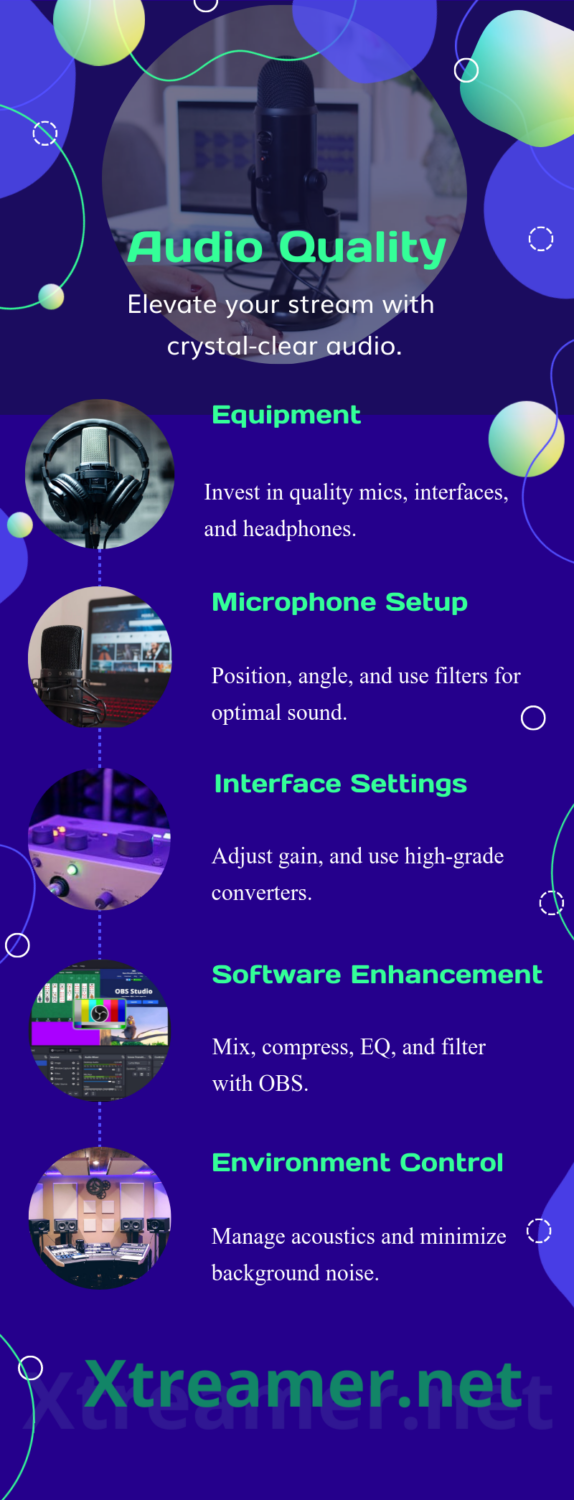
Choosing the Right Equipment
Selecting the right audio equipment is fundamental to achieving high-quality sound. Microphones are the cornerstone of any audio setup, with dynamic and condenser mics serving different purposes.
Dynamic Microphones
Dynamic microphones are preferred in environments where robustness is required.
Known for their durability and ability to handle high sound pressure levels, dynamic microphones are less sensitive to moisture and temperature changes, making them ideal for live performances and environments with background noise.
Popular choices among streamers include the Shure SM7B and the Electro-Voice RE20, which are praised for their ability to deliver clear sound without picking up too much ambient noise.
Condenser Microphones
Condenser mics are valued for their sensitivity and ability to capture a broader range of frequencies and subtle sound nuances, which makes them perfect for studio settings and voice-over work where clarity and detail are paramount.
They require phantom power, which can be supplied by most audio interfaces.
Examples of widely used condenser microphones in streaming include the Audio-Technica AT2020 and the Rode NT1-A, known for their crisp sound and fidelity.
Audio Interfaces
A high-quality audio interface is crucial as it serves as the bridge between your microphones and your computer.
It converts analog signals into digital data that your streaming software can use. Look for interfaces with high-quality preamps to boost microphone signals without adding noise.
Features like smart gain control can automatically adjust input levels to prevent clipping and ensure consistent audio quality throughout the stream.
Popular audio interfaces among streamers include the Focusrite Scarlett 2i2 and the Universal Audio Apollo Twin, both renowned for their excellent sound quality and reliability.
Headphones
For streamers, headphones are not just about listening to audio. They are critical for monitoring the audio in real-time.
Closed-back headphones are particularly useful for this purpose, as they prevent audio bleed—this is crucial when using a microphone in the same space.
Good monitoring headphones will let you hear exactly what your audience is hearing, allowing you to make adjustments in real time.
Models like the Sony MDR-7506 and the Audio-Technica ATH-M50x are favorites due to their clear sound reproduction and isolation capabilities.
Microphone Setup and Techniques
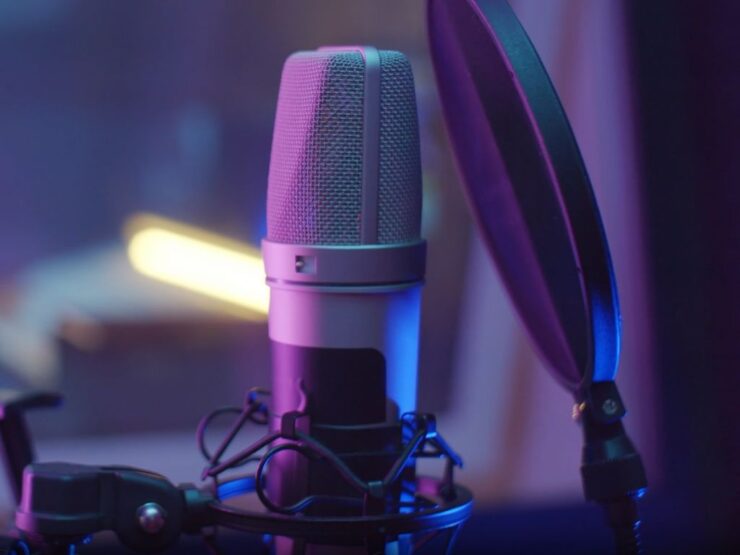
Achieving superior sound quality starts with the correct setup and use of your microphone, which can have a profound effect on the audio that your audience hears.
The setup encompasses not just the physical placement of the microphone but also the techniques and tools used to optimize sound capture.
Placement and Distance
The position of the microphone relative to the speaker is critical. Typically, placing the microphone 6-12 inches from the mouth is ideal.
This distance helps in capturing clear audio while mitigating the risk of plosives—sharp, explosive breath sounds that can produce peaks in the audio signal, often heard with “p,” “t,” and “k” sounds.
Angling the microphone slightly off-center from the mouth can also help reduce these unwanted sounds without losing audio clarity.
Room Noise and Reverberation
Unwanted background noise and echo can greatly affect audio clarity, making it difficult for listeners to understand spoken content clearly.
To combat this, streamers can employ various techniques:
- Acoustic Treatments: Adding acoustic panels to the walls of your streaming space can significantly absorb reflected sounds and reduce reverberation.
- Soft Furnishings: Including items like thick carpets, heavy drapes, or upholstered furniture can also help absorb sound.
- Strategic Room Layout: Arrange your furniture and equipment to create barriers that break up sound pathways and minimize echo.
Pop Filters and Shock Mounts
Installing a pop filter between your mouth and the microphone is an effective way to smooth out the plosives.
Pop filters are typically made from nylon or metal mesh and work by dispersing the air from your breath as you speak, which reduces the impact of these sharp sounds on the microphone.
To further enhance audio quality, using a shock mount is advisable. Shock mounts help to isolate the microphone from vibrations and stand noise.
This isolation is crucial for preventing low-frequency rumbles and handling noise from being captured by the mic.
Audio Interface Settings
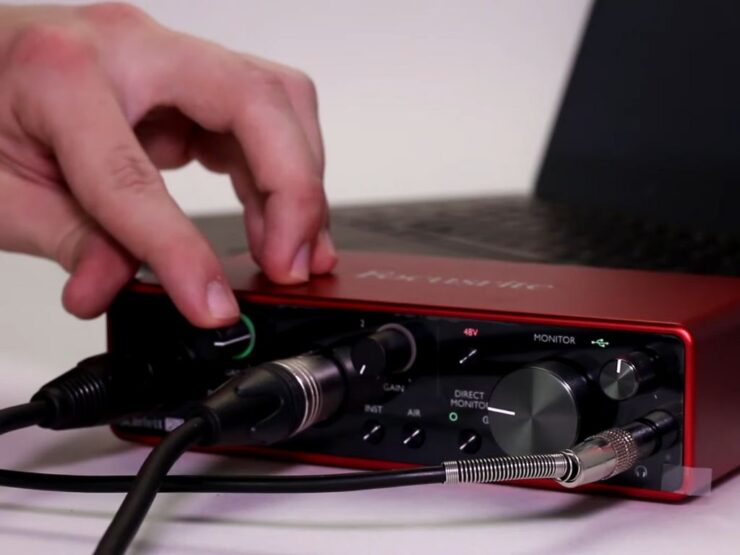
The audio interface is a pivotal component in your streaming setup, serving as the bridge between your microphone (or other audio sources) and your computer.
Proper configuration is essential to ensure that the sound captured and broadcasted is of the highest quality.
Setting the Correct Gain Level
The gain control on your audio interface adjusts the amplitude of the microphone signal.
It’s vital to set this level correctly to balance capturing a strong enough signal without introducing distortion.
Start with a lower gain setting and gradually increase it while speaking or playing an instrument until you see the signal comfortably reaching about -6 dB on the meter for the loudest parts.
This setting prevents clipping (when the signal is too loud and distorts) while ensuring the signal is robust enough for clear audio reproduction.
Quality of Digital Converters
The digital converters in your audio interface play a crucial role in how the analog signal from your microphone is transformed into digital data for your computer to process.
High-quality converters ensure that this conversion is as accurate as possible, minimizing any introduction of noise or artifacts that can degrade sound quality.
Investing in an interface with top-notch converters, like those found in interfaces from brands like Apollo or Focusrite, can significantly enhance the clarity and fidelity of your audio.
Enhancing Audio with Software
Software plays a crucial role in achieving professional-grade audio quality in streaming. Programs like OBS (Open Broadcaster Software) and others offer extensive tools that allow streamers to manipulate and enhance their audio inputs in real time.
Here’s what you can do:
| Feature | Description |
|---|---|
| Audio Mixing Capabilities | Mixes audio from various sources with controls for levels and routing to ensure clarity. |
| Compression | Maintains consistent audio levels by reducing dynamic range, and enhancing voice clarity. |
| Equalization (EQ) | Tailors audio frequencies to improve speech clarity or reduce noise. |
| Noise Gates and Filters | Mutes background noise and targets specific frequencies to isolate desired sounds. |
The Bottom Line
Achieving high-quality audio is about understanding the interplay between equipment, environment, and software.
The goal is to provide a clear and pleasant auditory experience for the audience, which in turn can help grow and sustain viewer engagement.
We are certain that this insight of ours will provide you with all the means to achieve this goal.



